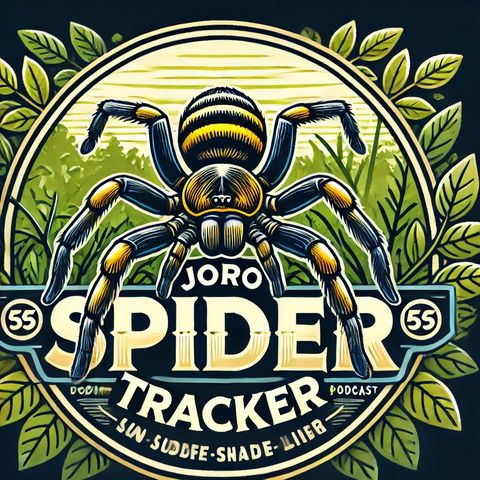"Joro Spider Invasion: Exploring the Surprisingly Benign Impact on East Coast Ecosystems"

Sign up for free
Listen to this episode and many more. Enjoy the best podcasts on Spreaker!
Download and listen anywhere
Download your favorite episodes and enjoy them, wherever you are! Sign up or log in now to access offline listening.
Description
The Joro spider, a striking yellow-patterned arachnid native to East Asia, has been causing quite a stir as it spreads along the East Coast of the United States. Known scientifically...
show moreDespite concerns typically associated with invasive species, current insights suggest that Joro spiders may not pose significant threats to local ecosystems. Unlike some invasive species that disrupt local wildlife and vegetation, preliminary observations indicate that these spiders integrate without causing major ecological disturbances. This is partly because they tend to occupy ecological niches that do not compete directly with those of native species.
Regarding the impact on plants, there appears to be minimal direct effect. Joro spiders are primarily hunters of insects, using their substantial orb-shaped webs to capture prey such as flies, bees, and other small insects. This diet means they do not feed on or harm plants directly. In some cases, their presence could potentially benefit garden environments by reducing pest populations that might otherwise damage floral and vegetative growth.
Moreover, the silk of Joro spiders, known for its impressive strength and resilience, poses no threat to plant health. While these webs are large and can be quite extensive, they are not known to cause any harm to the plants around which they are spun. In fact, the webbing might even provide incidental protection for plants by capturing or deterring some types of pests.
Despite the benign nature of their interaction with plant life, the presence of Joro spiders can still be alarming to residents unaccustomed to their size and appearance. However, these spiders are generally not aggressive towards humans and are considered harmless. Their venom is not potent enough to cause issues for humans, although, like any spider, they can bite in self-defense if provoked.
As Joro spiders continue to establish themselves across the Northeastern and other parts of the East Coast, ongoing studies will be crucial to fully understand their long-term impact on local ecosystems. For now, gardeners and homeowners can rest assured that these spiders are unlikely to cause any harm to their plants and may even contribute positively by keeping pest populations in check. However, monitoring and research continue to ensure that the spread of this invasive species does not lead to unforeseen environmental consequences.
Information
| Author | QP-4 |
| Website | - |
| Tags |
Copyright 2024 - Spreaker Inc. an iHeartMedia Company
